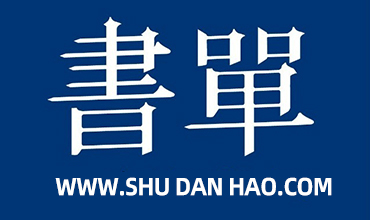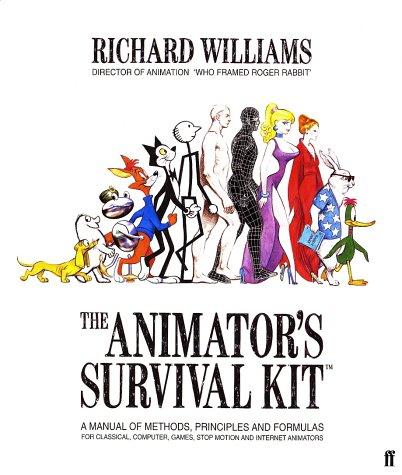![[美] 科特勒《营销管理分析、计划、执行与控制(第九版)》](http://oss.shudanhao.com/caiji/chazidian/2023/8248.jpg)
[美] 科特勒《营销管理分析、计划、执行与控制(第九版)》
书刊介绍
内容简介
内容提要
本书作者是美国营销学界权威人士之一,这本《营销管理-分析、
计划、执行与控制》已取得营销学界的普遍认可,并广泛地应用于教
学和实践。第九版由介绍营销管理的原理概念、分析营销机会、制定
营销战略、营销计划和组织执行市场营销等五个部分组成,继续保持
了以往各版的一些基本出发点和特征,包括:
1.面向管理者,重点在于决策协调;
2提供分析营销管理中常见问题的一个框架,以真实的案例说明原理;
3.引用许多经济学、行为科学和数学方面的基本原理;
4.把营销思想应用于市场的各个方面、而不只是指产品和服务;
5.覆盖面广而内容安排均衡,包括了一个营销管理人员需要知道的
所有课题。
作者看到了营销中非常重要的一些趋势,如全球营销观点的进一
步兴起、电子网上销售、高技术产业营销地位的加强、公众及企业对
市场及营销行为道德的呼吁等等,并如多年前提出著名的营销组合概
念一样,又提出了许多新的营销观点和概念。可以说,作者捕捉新信
息的能力是非凡的。这本书堪称营销方面的最新著作,对将来或许产
生深远的影响。
本书可以作为大学商学院本科生和研究生教学的优秀教科书,也
可用作研究和实际工作的参考。
作品目录
BRIEF CONTENTS
UNDERSTANDING MARKETING MANAGEMENT
1 Assessing Marketing's Critical Role in Organizational Performance
2 Building Customer Satisfaction Through Quality, Service, and Value
3 Winning Markets Through Market-Oriented Strategic Planning
ANALYZING MARKETING OPPORTUNITIES
4 Managing Marketing Information and Measuring Market Demand
5 Scanning the Marketing Environment
6 Analyzing Consumer Markets and Buying Behavior
7 Analyzing Business Markets and Business Buying Behavior
8 Analyzing Industries and Competitors
9 Identifying Market Segments and Selecting Target Markets
DEVELOPING MARKETING STRATEGIES
10 Differentiating and Positioning the Market Offering
11 Developing New Products
12 Managing Life-Cycle Strategies
13 Designing Marketing Strategies for Market Leaders, Challengers,Followers, and Nichers
14 Designing and Managing Global Marketing Strategies
PLANNING MARKETING PROGRAMS
15 Managing Product Lines, Brands, and Packaging
16 Managing Service Businesses and Product Support Services
17 Designing Pricing Strategies and Programs
18 Selecting and Managing Marketing Channels
19 Managing Retailing, Wholesaling, and Market Logistics
20 Designing and Managing Integrated Marketing Communications
21 Managing Advertising, Sales Promotion, and Public Relations
22 Managing the Sales Force
23 Managing Direct and Online Marketing
MANAGING THE MARKETING EFFORT
Organizing, Implementing, Evaluating, and Controlling Marketing
Activities
TECHNICAL APPENDIXES
Appendix 1. The Theory of Effective Marketing-Resource Allocation
Appendix 2. Statistical Methods for Future Demand Projection
AUTHOR INDEX
COMPANY/BRAND INDEX
SUBJECT INDEX
Preface
Part l
UNDERSTANDING MARKETING
MANAGEMENT
CHAPTER 1 Assessing Marketing's Critical Role in Organizational
Performance
DOING BUSINESS IN THE GLOBAL ECONOMY
The Global Economy ?The Income Gap ?The
Environmental Imperative and Other Business Trends ? Technological Advances ?Focus on the Customer ? Other Issues
WHAT IS MARKETING? THE CORE CONCEPTS
Needs, Wants, and Demands ?Products (Goods, Services,
and Ideas) ?Value, Cost, and Satisfaction ?Exchange
and Transactions ?Relationships and Networks ? Markets ?Marketers and Prospects
MARKETING MANAGEMENT
COMPANY ORIENTATIONS TOWARD THE
MARKETPLACE
The Production Concept ?The Product Concept ? The Selling Concept/Sales Concept ?The Marketing
Concept ?The Societal Marketing Concept
THE RAPID.ADOPTION OF MARKETING
MANAGEMENT
In the Business Sector ?In the Nonprofit Sector ?In;
the Global Sector
SUMMARY
CONCEPT APPLICATIONS
NOTES
CHAPTER 2 Building Customer Satisfaction Through Qualtty,
Service, and Value
DEFINING CUSTOMER VALUE AND SATISPACTION
Customer Value ?Customer Satisfaction
DELIVERING CUSTOMER VALUE AND
SATISFACTION
Value Chain ?Value-Delivery Network
ATTRACTING AND RBTAINING CUSTOMERS
Computihg the Cost ofLostCustomers ?TheNeedfor
Customer Retention ?Relationship Marketing:
The Key
CUSTOMER PROFITABILITY: THE ULTIMATE TEST
IMPLEMENTING TOTAL QUALITY MARKETING
SUMMARY
CONCEPT APPUCATIONS
NOTES
CHAPTBR 3 Winning Markets Through Market-Oriented Strategic
Planning
THE NATURE OF HlGH-PERFORMANCE BUSINESSES
Stakeholders ?Processes ?Resources ? Organization and Organizational Culture
CORPORATE AND DlVISION STR ATEGIC PLANNING
Defining the Corporate Mission ?Establishing Strategic
Business Units ?Assigning Resources to Each SBU ? Planning New Businesses ?Downsizing Older
Businesses
BUSINESS STRATEGIC PLANNING
Business Mission 80 ?External Environment Analysis
(Opportunity and Threat Analysis) ?Internal Environment
Analysis (Strengths/Weaknesses Analysis) ?Goal
Formulation ?Strategy Pormulation ?Program
Formulation ?Implementation ?Peedback and
Control
THE MARKETING PROCESS
Analyzing Marketing Opportunities ?Developirig
Marketing Strategies ?Planning Marketing Programs
?Managing the Marketing Effort
PRODUCT PLANNING: THE NATURE AND CONTENTS OF A
MARKETING PLAN
Executive Summary and Table of Contents ?Current
Marketing Situation ?Opportunity and Issue Analysis
?Objectives ?Marketing Strategy ?Action
Programs ?Projected Profit-and-Loss Statement ? Controls
THE SHAPE OF MARKETING PLANNING IN THE
1990s
SUMMARY
CONCEPT APPLICATIONS
NOTES
Part 11
ANALYZING MARKETING
OPPORTUNITIES
CHAPTER 4 Managing Marketing Information and Measuring
Market Demand
WHAT IS A MARKETING INFORMATION SYSTEM?
INTERNAL RECORDS SYSTEM
The Order-to-Payment Cycle ?Sales Reporting
Systems
MARKETING INTELLIGENCE SYSTEM
MARKETING RESEARCH SYSTEM
Suppliers ofMarketing Research ?The Marketing Research
Process ?The Characteristics ofGoodMarketing Research
?Overcoming Barriers to the Use ofMarketing Research
MARKETING DECISION SUPPORT SYSTEM
AN OVERVIEW OF FORECASTING AND DEMAND
MEASUREMENT
Measures of Market Demand ?Which Market to
Measure? ?A Vocabulary for Demand Measurement
?Estimating Current Demand ?Estimating Future
Demand
SUMMARY
CONCEPT APPLICATIONS
NOTES
CHAPTER 5 Scanning the Marketing Environment
ANALYZING NEEDS AND TRENDS IN THE
MACROENVIRONMENT
IDENTIFYING AND RESPONDING TO THE MAJOR
MACROENVIRONMENT FORCES
Demographic Environment ?Economic Environment
?Natural Environment
?Political/Legal Environment
Environment
SUMMARY
CONCEPT APPLICATIONS
NOTES
CHAPTER 6 Analyzing Consumer Markets and Buying
Behavior
A MODEL OF CONSUMER BEHAVIOR
MAJOR FACTORS INFLUENCING BUYING
BEHAVIOR
Cultural Factors ?Social Factors ?Personal
Factors ?Psychological Factors
?Technological Environment
?Social/Cultural
THE BUYING PROCESS
Buying Roles ?Buying Behavior
the Buying Decision Process
SUMMARY
CONCEPT APPLICATIONS
NOTES
?The Stages of
CHAPTER 7 Analyzing Business Markets and Business Buying
Behavior
WHAT IS ORGANIZATIONAL BUYING?
The Business Market versus the Consumer Market ? Buying Situations ?Participants in the Business Buying
Process ?Major Influences on Business Buyers ? The Purchasing/Procurement Process
INSTITUTIONAL AND GOVERNMENT MARKETS
SUMMARY
CONCEPT APPLICATIONS
NOTES
CHAPTER 8 Analyzing Industries and Competitors
IDENTIFYING COMPETITORS
Industry Concept of Competition ?Market Concept of
Competition
IDENTIFYING COMPETITORS' STRATEGIES
DETERMINING COMPETITORS' OBJECTIVES
ASSESSING COMPETITORS' STRENGTHS AND
WEAKNESSES
ESTIMATING COMPETITORS' REACTION PATTERNS
DESIGNING THE COMPETITIVE INTELLIGENCE
SYSTEM
SELECTING COMPETITORS TO ATTACK AND AVOID
BALANCING CUSTOMER AND COMPETITOR
ORIENTATIONS
SUMMARY
CONCEPT APPLICATIONS
NOTES
CHAPTER 9 Identifying Market Segments and Selecting Market
Targets
MARKET SEGMENTATION
Levels of Market Segmentation ?Patterns of Market
Segmentation ?Market-Segmentation Procedure ? Bases for Segmenting Consumer Markets ?Bases for
Segmenting Business Markets ?Requirements for Effective
Segmentation
MARKET TARGETING
Evaluating the Market Segments ?Selecting the Market
Segments ?Additional Considerations in Evaluating and
Selecting Segments
SUMMARY
CONCEPT APPLICATIONS
NOTES
Part lll
DEVELOPING MARKETING STRATEGIES
CHAPTER 10 Differentiating and Positioning the Market
Offering
TOOLS FOR COMPETITIVE DlFFERENTIATION
Product Differentiation ?Services Differentiation
Personnel Differentiation ?Channel Differentiation
?Image Differentiation
DEVELOPING A POSITIONING STRATEGY
How Many Differences to Promote? ?Which Differences
to Promote?
COMMUNICATING THE COMPANY'S POSITIONING
SUMMARY
CONCEPT APPLICATIONS
NOTES
CHAPTER 11 Developing New Products
CHALLENGES IN NEW-PRODUCT DEVELOPMENT
EFFECTIVE ORGANIZATIONAL ARRANGEMENTS
MANAGING THE NEW-PRODUCT DEVELOPMENT
PROCESS
Idea Generation ?Idea Screening ?Concept
Development and Tescing ?Marketing Strategy
Development ?Business Analysis ? Product Development ?Market Testing ? Commetcialization
?THE CONSUMER-ADOPTION PROCESS
Stages in the Adoption Process ?Factors Influencing rhe
Adoprion Process
SUMMARY
CONCEPT APPLICATIONS
NOTES
CHAPTER 12 Managing Life-Cycle Strategies
THE PRODUCT LlFE CYCLE
Demand/Technology Life Cycle ?Stages in the Product
Life Cycle ?Product-Category, Product-Form, Product,
and Brand Life Cycles ?Other Shapes of the Product Life
Cycle The International Product Life Cycle
MARKETING STRATEGIES THROUGHOUT THE PLC
Introduction Stage ?Growth Stage ?Maturity
Stage ?Decline Stage
the Product Life-Cycle Concept
MARKET EVOLUTION
Stages in Market Evolution
Competition
SUMMARY
CONCEPT APPLICATIONS
NOTES
?Summary and Cntique of
?Dynamics of Attribute
CHAPTER 13 Designing Marketing Strategies for Market Leaders,
Challengers, Followers, and Nichers
MARKET-LEADER STRATEGIES
Expanding the Total Market ?Defending Market Share
?Expanding Market Share ?Two Case Scudies:
Procter & Gamble and Caterpillar
MARKET-CHALLENGER STRATEGIES
Defining the Strategic Objective and Opponent(s) ? Choosing a General Attack Stracegy ?Choosing a Specific
Attack Strategy
MARKET-FOLLOWER STRATEGIES
MARKET-NlCHER STRATEGIES
Niche Specialization
SUMMARY
CONCEPT APPLICATIONS
NOTES
CHAPTER 14 Designing and Managing Global Marketing
Strategies
DECIDING WHETHER TO GO ABROAD
DECIDING WHICH MARKETS TO ENTER
DECIDING HOW TO ENTER THE MARKET
Indlrect Export ?Direct Export ?Licensing
?Joint Venrures ?Direct Investment ?The
Internationalization Process
DECIDING ON THE MARKETING PROGRAM
Product ?Promotion ?Price ?Place
(Distribution Channels)
DECIDING ON THE MARKETING ORGANIZATION
Export Deparrment ?International Division ? Global Organization
SUMMARY
CONCEPT APPLICATIONS
NOTES
Part IV
PLANNING MARKETING PROGRAMS
CHAPTER 15 Managing Product Lines, Brands, and
Packaging
WHAT IS A PRODUCT?
Five Levels of a Product ?Product Hierarchy ? Product Classifications
PRODUCT-MIX DECISIONS
PRODUCT-LINE DECISIONS
Product-Line Analysis ?Product-Line Length ? Line Modernization ?Line Featuring ?Line
Pruning
BRAND DECISIONS
What Is a Brand? ?The Concept and Measarement of
Brand Equity ?Challenges in Branding
PACKAGING AND LABELING DECISIONS
Packaging ?Labeling
SUMMARY
CONCEPT APPLICATIONS
NOTES
CHAPTER 16 Managing Service Businesses and Product Support
Services
THE NATURE AND CLASS.IFICATION OF SERVICES
CHARACTERISTICS OF SERVICES AND THEIR MARKETING
IMPLICATIONS
Intangibility ?Inseparability ?Variability
Perishability
MARKETING STRATEGIES FOR SERVICE FlRMS
Managing Differentiation ?Managing Service Quality
?Managing Productivity
MANAGING PRODUCT SUPPORT SERVICES
Postsale Service Strategy
SUMMARY
CONCEPT APPLICATIONS
NOTES
CHAPTER 17 Designing Pricing Strategies and Programs
SETTING THE PRICE
Selecting the Pricing Objective ?Decermining Demand
?Estimating Costs ?Analyzing Competitors' Costs,
Prices, and Offers ?Selecting a Pricing Method ? Selecting the Final Price
ADAPTING THE PRICE
Geographical Pricing (Cash, Countertrade, and Barter) ? Price Discounts and Allowances ?Promotional Pricing
512 ?Discriminatory Pricing ?Product-Mix Pricing
INITIATING AND RESPONDING TO PRICE CHANGES
Initiating Price Cucs ?Initiating Price Increases ? Reactions to Price Changes ?Responding to Competitors'
Price Changes
SUMMARY
CONCEPT APPLICATIONS
NOTES
CHAPTER 18 Selecting and Managing Marketing Channels
WHAT ARE MARKETING CHANNELS?
Why Are Marketing Intermediaries Used? ?Channel
Functions and Flows ?Channel Levels ?Channels
in the Service Sector
CHANNEL-DESIGN DECISIONS
Analyzing Cuscomers' Desired Service Output Levels ? Establishing the Channel Objectives and Constraints ? Identifying the Major Channel Akernatives ?Evaluating
the Major Channel Alternatives
CHANNEL-MANAGEMENT DECISIONS
Selecting Channel Members ?Motivating Channel
Members ?Evaluating Channel Members ? Modifying Channel Arrangements
CHANNEL DYNAMICS
Vertical Marketing Systems ?Horizontal Marketing
Systems Multchannel Marketing Systems ? Roles oflndividual Firms in a Channel
CHANNEL COOPERATION, CONFLICT, AND
COMPETITION
Types ofConflict and Competition ?Causes ofChannel
Conflict ?Managing Channel Conflict ?Legal and
Ethical Issues in Channel Relations
SUMMARY
CONCEPT APPLICATIONS
NOTES
CHAPTER 19 Managing Retailing, Wholesaling, and Market
Logistics
RETAILING
Types of Retailers ?Retailer Marketing Decisions ? Trends in Retailing
WHOLESALING
The Growth and Types ofWholesaling ?Wholesaler
Marketing Decisions ?Trends in Wholesaling
MARKET LOGISTICS
Market-Logistics Objectives ?Market-Logistics Detisions
?Organizational Lessons About Market Objeccives
SUMMARY
CONCEPT APPLICATIONS
NOTES
CHAPTER 20 Designing and Managing Integrated Marketing
Communications
A VlEW OF THE COMMUNICATION PROCESS
DEVELOPING EFFECTIVE COMMUNICATIONS
Identifying the Target Audience ?Determining the
Communication Objectives ?Designing the Message
?Selecting the Communicacion Channels ? Establishing the Total Promotion Budget ?Deciding on
the Promotion Mix ?Measuring the Promotion's Results
?Managing and Coordinating Integrated Marketing
Communications
SUMMARY
CONCEPT APPLICATIONS
NOTES
CHAPTER 21 Managing Advertising, Sales Promotion, and Public
Relations
DEVELOPING AND MANAG'ING AN ADVERTISING
PROGRAM
Setting the Advertising Objectives ?Deciding on the
Advertising Budget ?Choosing the Advertising Message
?Deciding on the Media ?Evaluating Advertising
Effecciveness
SALES PROMOTION
The Rapid Growth ofSales Promotion ?Purpose of Sales
Promotion ?Major Decisions in Sales Promotion
PUBLIC RELATIONS
Major Decisions in Marketing PR
SUMMARY
CONCEPT APPLICATIONS
NOTES
CHAPTER 22 Managing the Sales Force
DESIGNING THE SALES FORCE
Sales Force Objectives ?Sales Force Strategy ? Sales Force Structure ?Sales Force Size ?Sales
Force Compensation
MANAGING THE SALES FORCE
Recruiting and Selecting Sales Representatives ?Training
Sales Representacives ?Supervising Sales Representatives
696 ?Motivating Sales Represencatives ?Evaluating Sales
Representative.s
PRINCIPLES OF PERSONAL SELLING
Sales Professionalism ?Negotiation ?Relationship
Marketing
SUMMARY
CONCEPT APPLICATIONS
NOTES
CHAPTER 23 Managing Direct and Online
Marketing
THE GROWTH AND BENEFITS OF DlRECT
MARKETING
The Growth of Direct Marketing and Electronic Shopping ? The Benefits of Direct Marketing
CUSTOMER DATABASES AND DlRECT
MARKETING
MAJOR CHANNELS FOR DlRECT MARKETING
Face-to-Face Selling ?Direct-Mail Marketing ? Catalog Marketing ?Telemarketing ?Television
and Other Major Media Direct-Response Marketing ? Kiosk Marketing ?Online Channels
MARKETING IN THE TWENTY-FIRST CENTURY: ONLINE
MARKETING
The Benefits ofOnline Marketing ?Online Marketing
Channels
THE GROWING USE OF INTEGRATED DlRECT
MARKETING
PUBLIC AND ETHICAL ISSUES IN THE USE OF DlRECT
MARKETING
SUMMARY
CONCEPT APPLICATIONS
NOTES
Part V
MANAGING THE MARKETING EFFORT
CHAPTER 24 Organizing, Implementing, Evaluating, and
Controlling Marketing Activities
COMPANY ORGANIZATION
MARKETING ORGANIZATION
The Evolution of the Marketing Department ?Ways of
Organizing the Marketing Department ?Marketing's
Relations with Other Departments ?Scracegies for
Building a Companywide Marketing Orientation
MARKETING IMPLEMENTATION
CONTROLLING MARKETING ACTIVITY
Annual-Plan Control ?Profitability Control
Efficiency Control ?Strategic Control
SUMMARY
相关推荐
-

在欧洲的心脏做生意
在欧洲的心脏做生意 本书特色 本书旨在帮助中国公司和商人理解并迎接如何在欧洲的心脏做生意的挑战。本书覆盖六个*重要的欧洲经济体——德国、法国、荷兰、比利时、卢森...
-

管理学基础-供管理.经济专业用
管理学基础-供管理.经济专业用 内容简介 管理学基础,是系统研究管理过程的基本理论和基本方法的科学。本书分九章。**章管理学概述,第二章管理思想的演变,第三章管...
-

戴夫·桑德斯《20世纪广告》
《20世纪广告》主要内容:广告是大众流行文化中最具有影响力的组成部分,人们在电视上、影院里、户外广告牌以及印刷品上,都能看
-

拐点-世界金融巨头大败局
拐点-世界金融巨头大败局 本书特色 本书对危机中败落的美国四大国际金融巨头的成功历史和它们落败的原因,以及美国政府救助与袖手旁观的理由、救助的方法和公平性问题,...
-
![[美] 马克·舍费尔《热点》](http://oss.shudanhao.com/caiji/chazidian/2023/8733.jpg)
[美] 马克·舍费尔《热点》
你是不是常常困惑:我创作内容,利用社交媒体,并紧跟每一次数字营销的创新和新平台的运作,可为什么我的业务和影响力没有明显起
-

培训师21项技能修炼-上-精湛课程开发
培训师21项技能修炼-上-精湛课程开发 本书特色 课程开发是整个培训的**步,课程开发的质量决定着课堂呈现的效果。分析学员,了解企业需求,设计课程结构和内容,如...
-

JavaFX应用开发教程
《JavaFX应用开发教程》内容简介:本书介绍JavaFX的GUI程序设计的基本内容,精心挑选并深入探讨JavaFX中具有代表性的应用开发技术—
-

人力资源管理教程(张一弛)北京大学经济类教材
人力资源管理教程(张一弛)北京大学经济类教材 内容简介 本书的目的是反映近年来国外在人力资源管理领域的教学体系与内容规范以及相关的研究成果,为我国该学科的建设与...
-

田村仁《靠一行字卖翻天》
靠一行字幫你賺錢!標題行銷時代來臨!唯有用字精確的產品標題,才能在品牌大海中脫穎而出!龙媒书店有卖,台湾版,52元,32开,
-

武齐《亚马逊营销》
亚马逊网络书店是网络书店的领头羊。本书结合亚马逊网络书店实际经营案例,对其网络营销成功的策略进行了剖析。本书是《强势百年
-

谁能给你一个亿?
谁能给你一个亿? 本书特色 “谁能给你一个亿?”在温州一个亿算什么?但是你要创业去找钱,重要的是要找到聪明的钱,温州的财富都是在商场的枪林弹雨里...
-

盛乐遗珍
作品目录目录前言两千余年的和林格尔古城图版后记· · · · · ·
-

市场营销学
市场营销学 本书特色 “压缩理论,加大实践”是编者王亮等编写《市场营销学》这本书的主要宗旨,也是本书与以往市场营销教材的*大区别之处。理论知识以“够用、...
-

行政事业单位财务会计法规手册
行政事业单位财务会计法规手册 本书特色 卢建超编著的《行政事业单位财务会计法规手册》作为一部法规汇编,一是收录新近出台的法规。如《事业单位会计准则》《事业单位会...
-

光影 · 十年
《光影 · 十年》内容简介:不管我们在路上还是在生活中,需要面对和经历的任何事物都是大自然赋予我们的高智商的心灵感触,放下一
-

海河流域平原河流生态保护与修复模式研究
海河流域平原河流生态保护与修复模式研究 本书特色 本书全面分析了平原河流防洪、供水、景观、环境、纳污、生态、发电等各项功能及其排序,从河流生态现状以及未来河流生...
-

劣势谈判-小人物的谈判策略
劣势谈判-小人物的谈判策略 本书特色 美国年度独立图书奖美国年度策略畅销书十佳小人物的谈判策略中小企业战胜大企业的制胜法宝中小企业年度团购图书冠军劣势谈判-小人...
-

克而瑞《地产策划人兵法》
《地产策划人兵法》是针对地产开发过程中经常用到的各种报告所编著的专业图书,主要讲述了如何编写规范的地产报告。全书分为三个
-
![[美] 乔舒亚·库珀·雷默《第七感》](http://oss.shudanhao.com/caiji/chazidian/2023/10157.jpg)
[美] 乔舒亚·库珀·雷默《第七感》
乔舒亚·库珀·雷默,全球知名的思想家、第七感理念的实践者、中国问题专家,首次提出新时代人人必备的感知能力——“第七感”,
-

创新的秘密-迪斯尼.乔布斯和尤努斯们是如何成功的
创新的秘密-迪斯尼.乔布斯和尤努斯们是如何成功的 本书特色 创新是创业成功的基础,每一个满怀激情、渴望改变世界的创业者,都渴望拥有创新的秘密。然而,成功的创新并...





